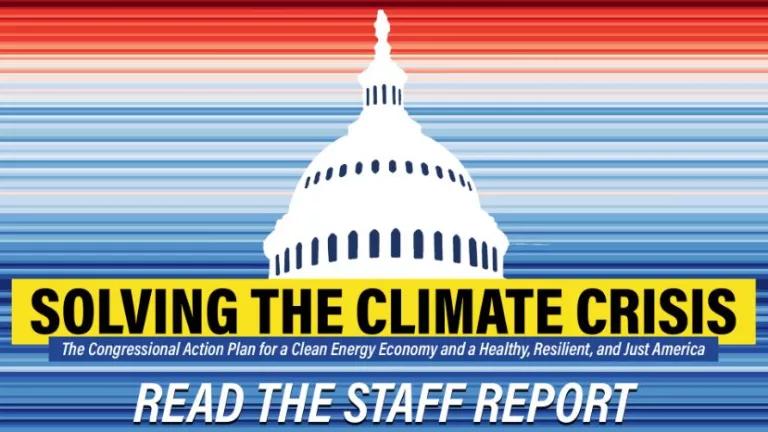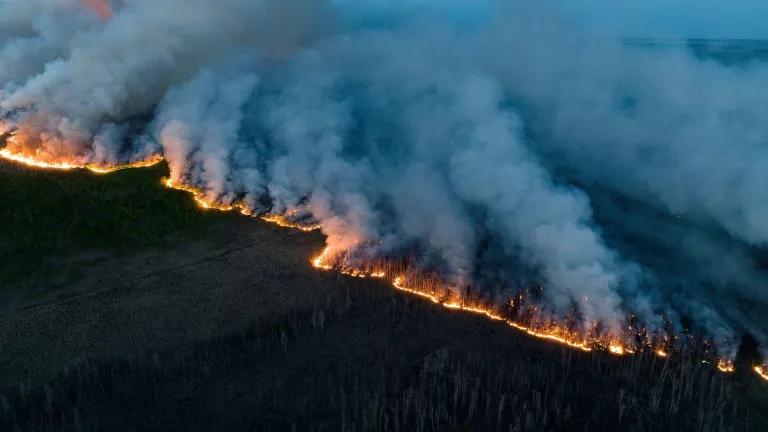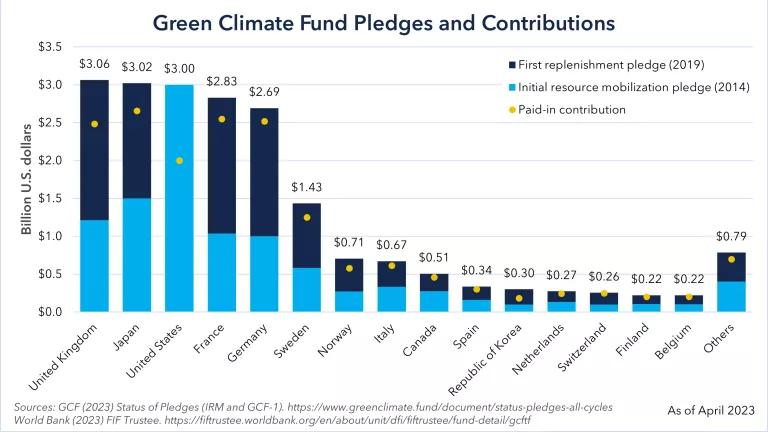House Climate Plan Calls for Community-Focused Adaptation
The Select Committee's report is the most detailed, robust congressional plan that we have seen on climate adaptation.

Climate change is real, and people across the nation—particularly people of color—are already feeling its effects. The new House Select Committee on the Climate Crisis report doesn’t shy away from this fact:
“Families are already feeling the rising costs of extreme heat, flooding, and other climate impacts every day in their electric bills, insurance rates, and medical bills.”
As my colleagues Marc and Jamie wrote, “This is clearly the most detailed, robust congressional plan on climate change we have seen to date and we hope Congress will act on its solutions quickly.”
While much of the report focuses (rightly) on the root causes of the climate crisis, this is also the most detailed, robust congressional plan that we have seen on climate adaptation—an essential component of “solving the climate crisis.” The report addresses specific hazards, such as floods and wildfires, but it also proposes a broader framework for planning and funding adaptation efforts.
The report follows the lead of the Fourth National Climate Assessment, recognizing that the effects of climate change are already here and acknowledging that they hit Black, Indigenous, and other communities of color first and worst. “The effects and costs of climate change are already manifesting across the nation and are projected to intensify, even as governments, businesses, and individuals take steps to reduce carbon pollution,” write the report’s authors. “Climate risks also exacerbate longstanding social, racial, and economic inequities, with our most vulnerable at the greatest risk and with the least capacity to adapt.”
This attention to adaptation is critical, particularly given the report’s focus on racial and environmental justice. With Black communities already at higher risk of experiencing floods and extreme heat, facing disproportionately high pregnancy risks, and bearing the brunt of the COVID-19 pandemic, it’s clear that we can’t “solve the climate crisis” without focused action on equitable adaptation.
Federal Support for Local Action
Many federal agencies have programs and policies that intersect with climate adaptation in some way. The Federal Emergency Management Agency (FEMA), for example, provides funding for pre-disaster hazard mitigation projects, and the U.S. Environmental Protection Agency (EPA) requires public water systems to develop risk and resilience plans. However, adaptation-focused efforts are too often ad hoc, narrow, and siloed. Others, such as the National Flood Insurance Program, have become adaptation policy by default, even though they were not designed with climate change in mind and are downright maladaptive. In all cases, there are far-reaching consequences for low-income communities, communities of color, and ultimately the nation as a whole.
The plan calls for creation of a National Climate Adaptation Commission (p. 380) that is “tasked with development of overarching principles, goals, and objectives and a National Climate Adaptation Plan,” as well as a National Climate Adaptation Program to provide “grants, finance capacity, and skilled technical assistance to states, local governments, tribes, and territories to finance and insure projects identified through hazard mitigation and climate adaptation plans, prioritizing low-income communities and communities of color that have been disproportionately affected by climate impacts.” Meanwhile, federal agencies must update the climate adaptation plans originally required under President Obama’s Executive Order 13653 and a reinstated Council on Climate Preparedness and Resilience will coordinate interagency efforts (p. 426).
Importantly, the plan focuses on how these federal actions can support communities. The actual work of adaptation must be local, but the federal government should provide funding, share information, and remove barriers to action. The report’s recommendations emphasize the importance of capacity building, pre-disaster hazard mitigation, science-based planning, and community-driven decision making. Among other appropriations, the plan calls for a $10 billion interagency technical assistance program (p. 382), a $1 billion investment in Flood Mitigation Assistance grants (p. 393), a minimum of $2 billion for FEMA’s Building Resilient Infrastructure and Communities program (p. 392), increased allocations for the Clean Water and Drinking Water State Revolving Funds (p. 187), and a new adaptation grant/loan program specifically designed to “drive equitable and resilient outcomes for the long term.” (p. 384)
Moving Beyond Resilience
As the report’s authors acknowledge, “Public policies are evolving to confront these issues and to help prepare and transition communities toward resilience, but much work remains to align public policies and investments with community needs and capabilities.” The plan lays out much-needed steps that must be taken to close the gap between communities’ adaptive capacity and the climate challenges they face.
And the emphasis on communities is particularly encouraging. Discussions of resilience—especially in U.S. federal agencies—often focus on strengthening infrastructure and protecting financial investments, emphasizing the need to "bounce back" and glossing over the human lives and communities that are the real assets at stake. It is heartening to see a Congressional climate plan recognize the critical importance of capacity building and community leadership.



